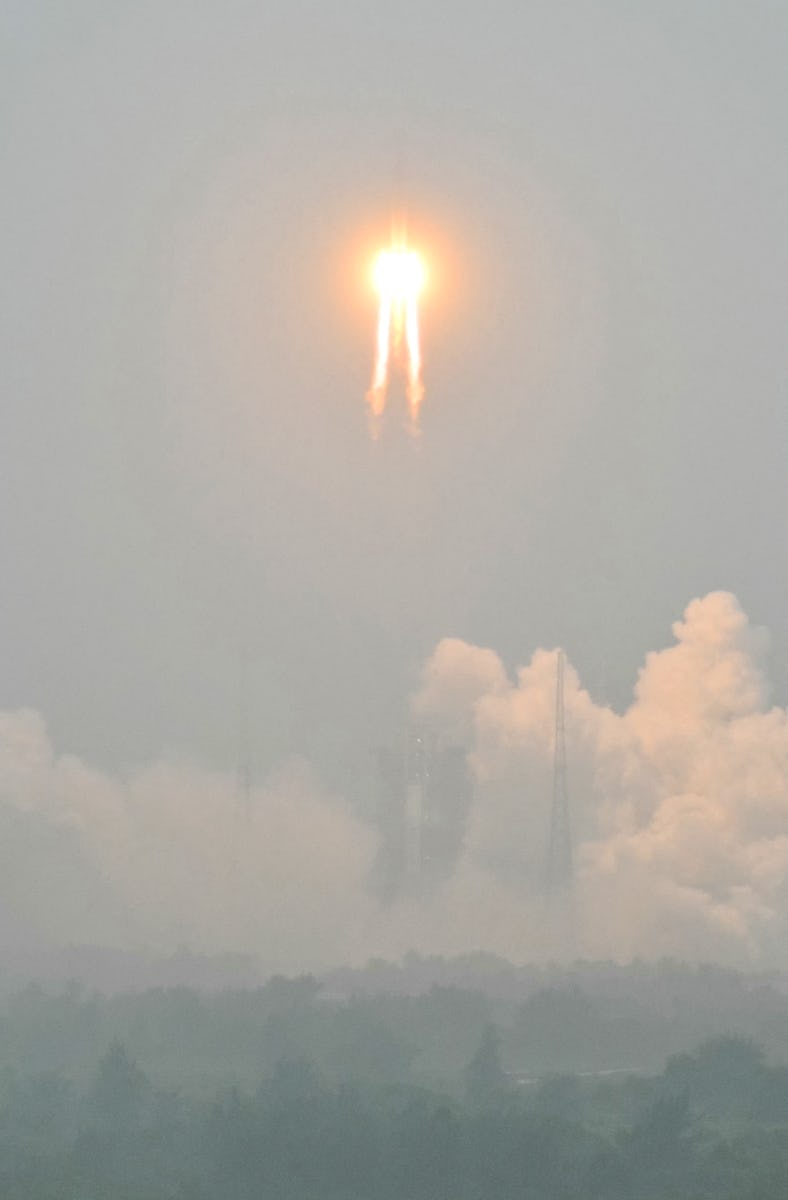China Just Launched its Chang'e-6 Mission To Grab Samples From the Elusive Far Side of the Moon
Liftoff for the Moon’s newest robotic visitor.

China has launched the Chang’e-6 rover to the Moon.
Chang’e-6 is the latest of the Chang’e fleet, named after the Chinese goddess of the Moon. On Friday, the rover launched atop a Chinese Long March-5 rocket from Wenchang Space Launch Site in south China's Hainan Province. Chang’e-6 has successfully deployed into space, and it’s now heading for the enigmatic far side of the Moon.
Its predecessor, Chang’e-5, collected about 2 kilograms of lunar material from the near side of the Moon in late 2020. This was the first time since the 1970s that humanity had brought samples from the Moon to Earth. In early 2019, Chang’e-4 was the first mission ever to land on the far side of the Moon. Chang’e-6 builds upon all that work.
Why go to the far side of the moon?
This monochrome mosaic is centered in the middle of the South Pole-Aitken basin. It comes from NASA’s Lunar Reconnaissance Orbiter.
Chang’e-6 will be a blend of both those earlier missions: It will retrieve samples from the far side of the Moon. Chang’e-6 will land in the largest and oldest known impact basin on the Moon. Known as the South Pole-Aitken (SPA) basin, it “stretches across nearly a quarter of the Moon,” according to the team that operates NASA’s Lunar Reconnaissance Orbiter.
It’s a fascinating place. The terrain is quite dramatic. The craters are also thought to have formed 3.9 billion years ago when life was just beginning to form on Earth. If the craters owe their existence to a chaotic episode of rocky bombardment, that same rocky rainfall likely struck Earth and the other terrestrial planets.
According to Chinese state media Xinhua, Chang’e-6 will deploy its robotic arm about 48 hours after landing. It will scoop up rocks and lunar dirt, called regolith. It will also excavate samples with a drill. The 53-day mission will culminate in samples, sealed away and ferried into an orbiter, flying to Earth. They’re expected to land in Inner Mongolia at the end of June.
Chang’e-6 is also carrying scientific instruments from other countries. “The Chang'e-6 mission is carrying four payloads developed through international cooperation. Scientific instruments from France, Italy, and the European Space Agency/Sweden are aboard the Chang'e-6 lander, and a small satellite from Pakistan is aboard the orbiter,” according to Xinhua.
In a year packed with lunar visits from other robots, like Odysseus of Houston-based Intuitive Machines, and Japan’s SLIM lander, Chang’e-6 is set to keep the momentum of 2024 Moon exploration building.